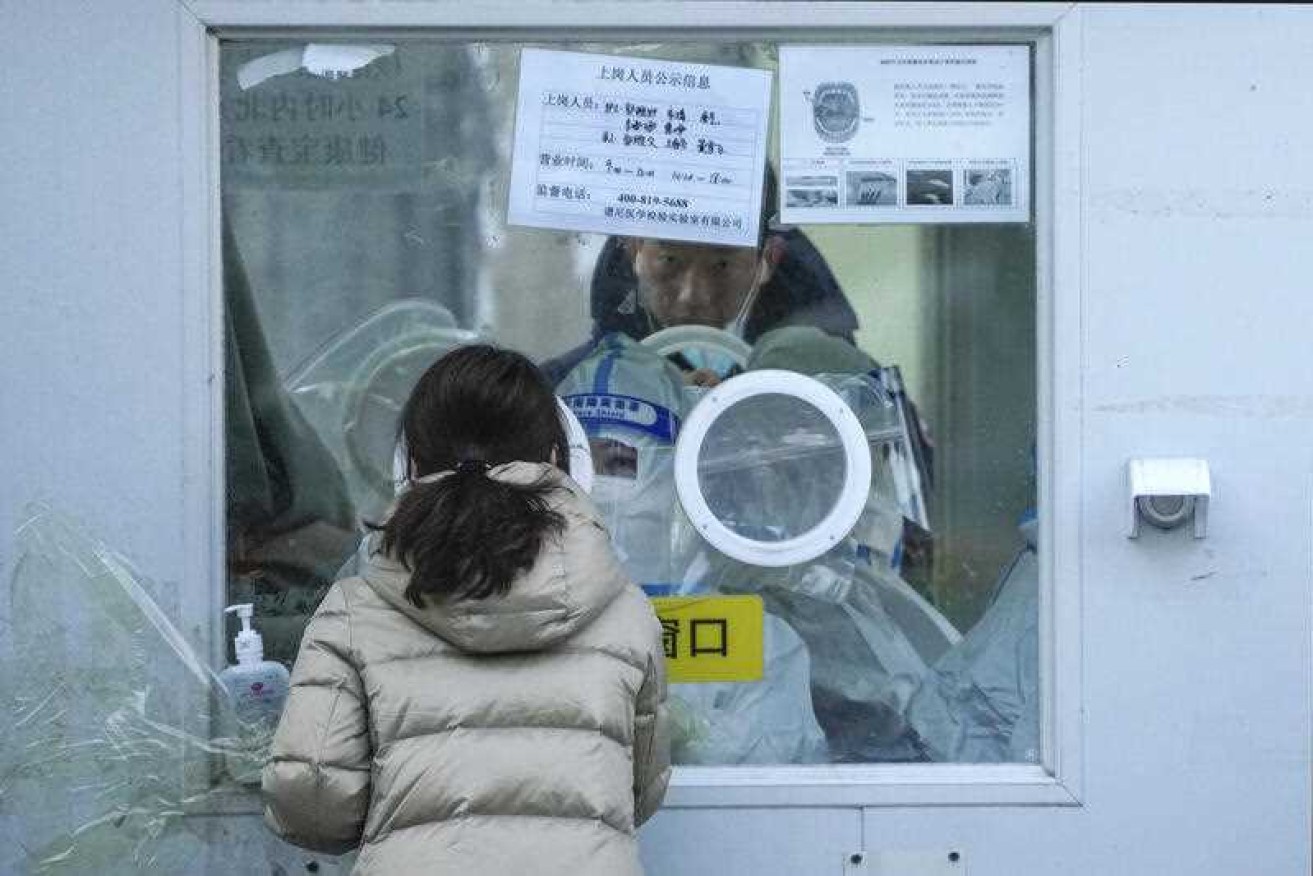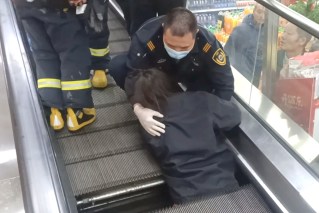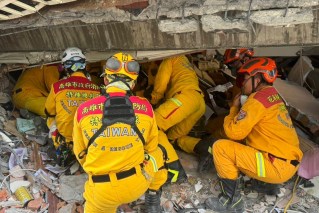Beijing relaxes COVID-19 testing protocols

COVID-19 restrictions are easing across China but some people remain wary of catching the virus. Photo: AP
People in China’s capital Beijing are allowed to enter parks, supermarkets, offices and airports without showing proof of a negative COVID-19 test as measures ease across the nation in the wake of historic protests.
“Beijing readies itself for life again” read a headline in the government-owned China Daily newspaper, adding that people were “gradually embracing” their new-found freedoms.
Authorities have been loosening some of the world’s toughest COVID-19 curbs to varying degrees and softening their tone on the threat of the virus in what many hope could herald a more pronounced shift toward normalcy three years into the pandemic.
Beijing has dropped the need for tests to ride the subway and both of the city’s airports no longer require people to test to enter the terminal, state media reported on Tuesday.
Further loosening of rules imminent
There was no indication of changes to rules requiring passengers to show negative tests prior to boarding.
But further loosening beckons after a string of protests last month that marked the biggest show of public discontent in mainland China since President Xi Jinping took power in 2012.
China may announce 10 new national easing measures as early as Wednesday, two sources with knowledge of the matter told Reuters.
The prospect of further relaxation of the rules has sparked optimism among investors that the world’s second-biggest economy would regather strength and help to boost global growth.
The Chinese yuan has risen about 5.0 per cent against the dollar since early November on expectations of an eventual reopening of China’s economy.
People slow to react to changes
But on the ground, many people have been slow to adapt to the changing rules.
Commuter traffic in major cities such as Beijing and Chongqing has remained at a fraction of normal levels.
Some people remain wary of catching the virus, especially the elderly, while there is concern about the strain the loosening could put on China’s fragile health system.
China had reported 5235 COVID-19-related deaths as of Monday but some experts have warned that toll could rise to more than one million if the exit is too hasty.
Analysts at Nomura estimate areas now under lockdown represent about 19.3 per cent of China’s total GDP, equivalent to the size of India’s economy but down from 25.1 per cent last Monday.
This marks the first decline in Nomura’s closely watched China COVID lockdown index since the start of October.
Officials play down dangers of virus
Officials continue to play down the dangers posed by the virus, bringing China closer to what other countries have been saying for more than a year as they dropped restrictions and opted to live with the virus.
Tong Zhaohui, director of the Beijing Institute of Respiratory Diseases, said on Monday the latest Omicron variant of the disease had caused fewer cases of severe illness than the 2009 global influenza outbreak, according to Chinese state television.
China’s management of the disease may be downgraded as soon as January, to the less strict Category B from the current top-level Category A of infectious disease, Reuters reported on Monday.
“The most difficult period has passed,” the official Xinhua news agency said in a commentary published late on Monday, citing the weakening pathogenicity of the virus and efforts to vaccinate 90 per cent of the population.
Analysts now predict China may reopen the economy and drop border controls sooner than expected next year.
-Reuters








